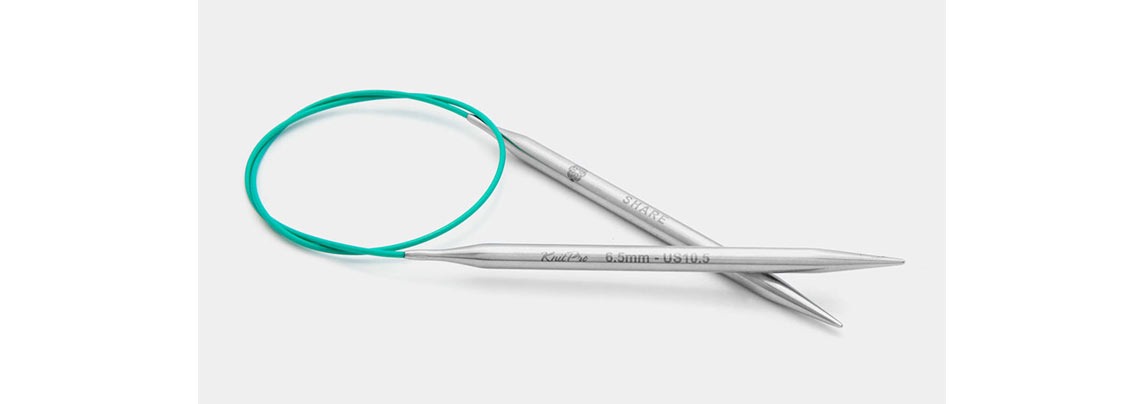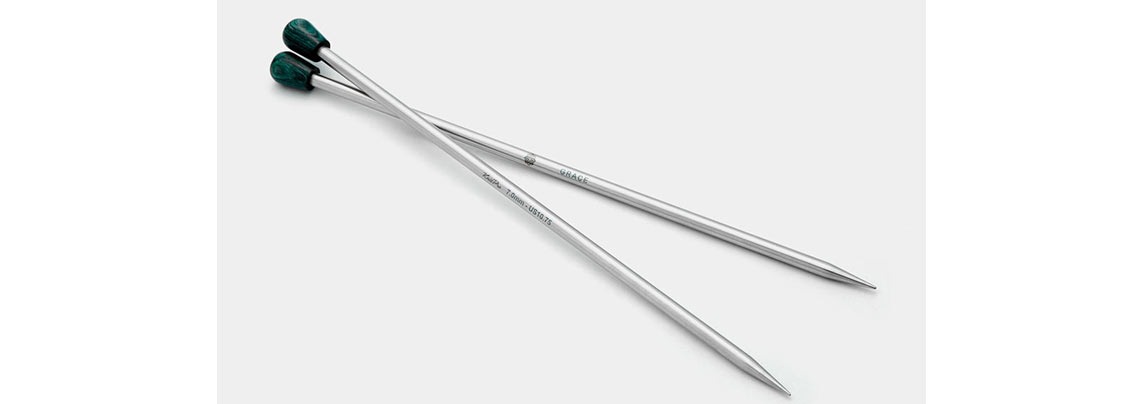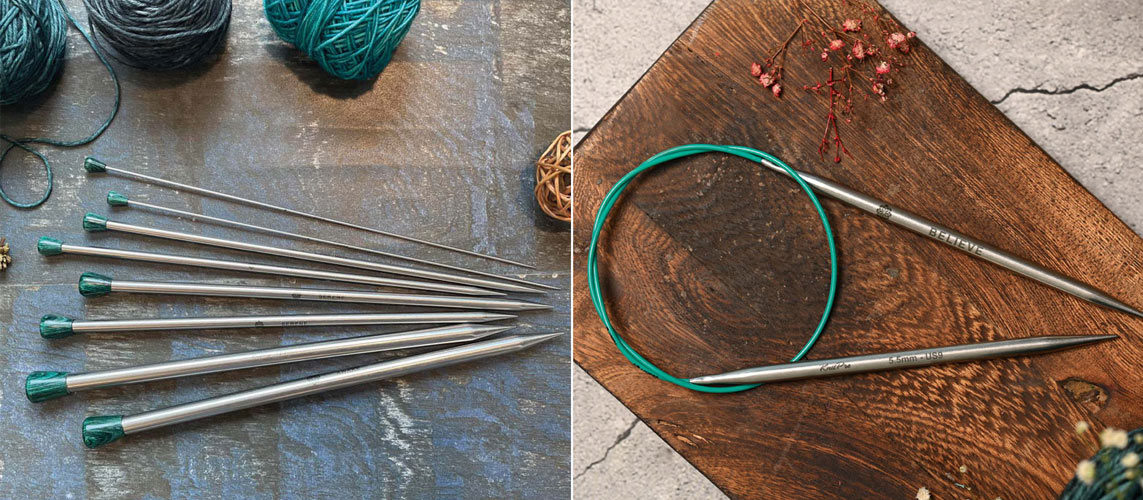Knitting needles are diverse like the community of knitters. They come in a variety of styles, sizes and materials. You can knit with any pair of needles and set of five in case on double pointed needles, but for the best results, you must choose what works best for you. Knitting with circulars or single-pointed or even double pointed needles doesn't affect the difficulty or ease of knitting but depends on a specific pattern or project. You can definitely knit with both types of needles but it's a personal choice when working on a specific project.
Let’s explain with an example. Say for instance you want to knit a shawl or a dishcloth. You can use circular or straight pointed needles, you can knit with any of the two. There will be no difference in the knitted fabric but there will be a difference in your comfort. If you want to knit a sweater you can make it on any knitting needle. You can knit it flat on STNs and then seam the back and front as well as sleeves. Or, you can knit in the round on circular needles or DPNs from the neckline or from the bottom. Both are perfect ways to make a sweater that fits and warms the recipient.
To help you make your choice, in this blog we’ll discuss all about knitting with circular as well as single pointed needles.
Knitting with Circular Needles

Circular knitting needles are versatile needles that can be used for knitting back and forth as well as in the round, bringing the best of both worlds. The same pair of needles can assist in making a blanket as well as a pair of socks or hat. To know more refer to our guide on circular knitting needles.
An ergonomic design circulars, both fixed and interchangeable ones have shorter needle tips in 15 and 20 cm, resulting in lighter needles with a flexible cable to hold them together. e circular knitting needles allow your stitches to rest on the cable that can be kept in your lap. This produces less hand fatigue, and you can knit for longer periods of time. The variety of cable lengths available makes them suitable for many types of projects. If your cable is long enough, you can even use the magic loop technique to knit round pieces with a really small circumference like mittens, sleeves or socks. When selecting the circular knitting needle length (both needle tips plus cables) should always be a little bit shorter than the total number of stitches you plan to accommodate, especially for round circumferences.
If you wish to knit many different circumferences or lengths (flat projects), a set of interchangeable circular needles is a great investment, as it will give you all the freedom to combine different needle sizes with a variety of cords.
Now for knitting in the round, with circular needles you don’t have to purl your way back. You will always face the front of your fabric. There are way less seams to sew, or none at all which will also save you a huge amount of time. With 25cm fixed circular needles you can make socks or a baby hat. For the magic loop technique go for lengths between 100 -150 cm.
Knitting with Single Pointed Needles

Most of us have learned to knit on single pointed needles, creating our first scarf, shawl or dishcloth, - you name it. The classic pair of knitting needles have a pointed tip on end and a stopper at the other to prevent the loops from falling off the end. They are ideal for knitting back and forth. You simply cast on stitches, turn the needles, knit your row and then turn over the project and purl all the way back to the beginning, and so on. You will face the right side of the work in one row and the wrong side when knitting the other.
Knitting with single pointed needles is believed to be more beginner-friendly. Even for projects such as sweater, you won’t have to tackle the whole garment at once, but rather concentrate on one part at a time. With time you can watch it grow piece by piece, stitch by stitch. Later you seam those pieces together according to your design and they will fit nicely, - provided you have taken good measurements beforehand. Should there still be a slight difference, the blocking process with the right blocking tools can help to adjust the fabric before you sew the pieces together.
While it is easier to tackle in parts when working on really large items, such as afghans or triangular shawls, having all the stitches bundled up on the end of your knitting needle creates an overload of weight. Your hands and wrist feel the fatigue and in turn takes you longer to finish your work.
Knitters are a very diverse community and it is totally up to you to find your favourite knitting style and the needle type that works best for you. Knitting projects in a complete piece on circulars or making pieces on straight STNs then bringing them together. Many knitters do not see the shortcomings necessarily as obstacles. And that is perfectly okay.
Now, that we’ve discussed everything about circulars and single pointed knitting needles, get ready to cast on your projects. A knitter can choose to express their creativity and make a knitted fabric in any way they want. Like every knitter is unique so are knitting needles, so it best to have them all in your craft collection! Whether you prefer circular or straight needles, it really comes down to your knitting habit and comfort. In the end it is the result that is important is the project. Your sweater must fit or the blanket must have straight edges.
With the Mindful Collection enjoy knitting with stainless steel needles. Designed for the mindful practice of knitting, each needles have a unique inspirational word imprinted on them. Focus on the word assist knitters with navigating difficult stitches and steps.
Happy Knitting!












